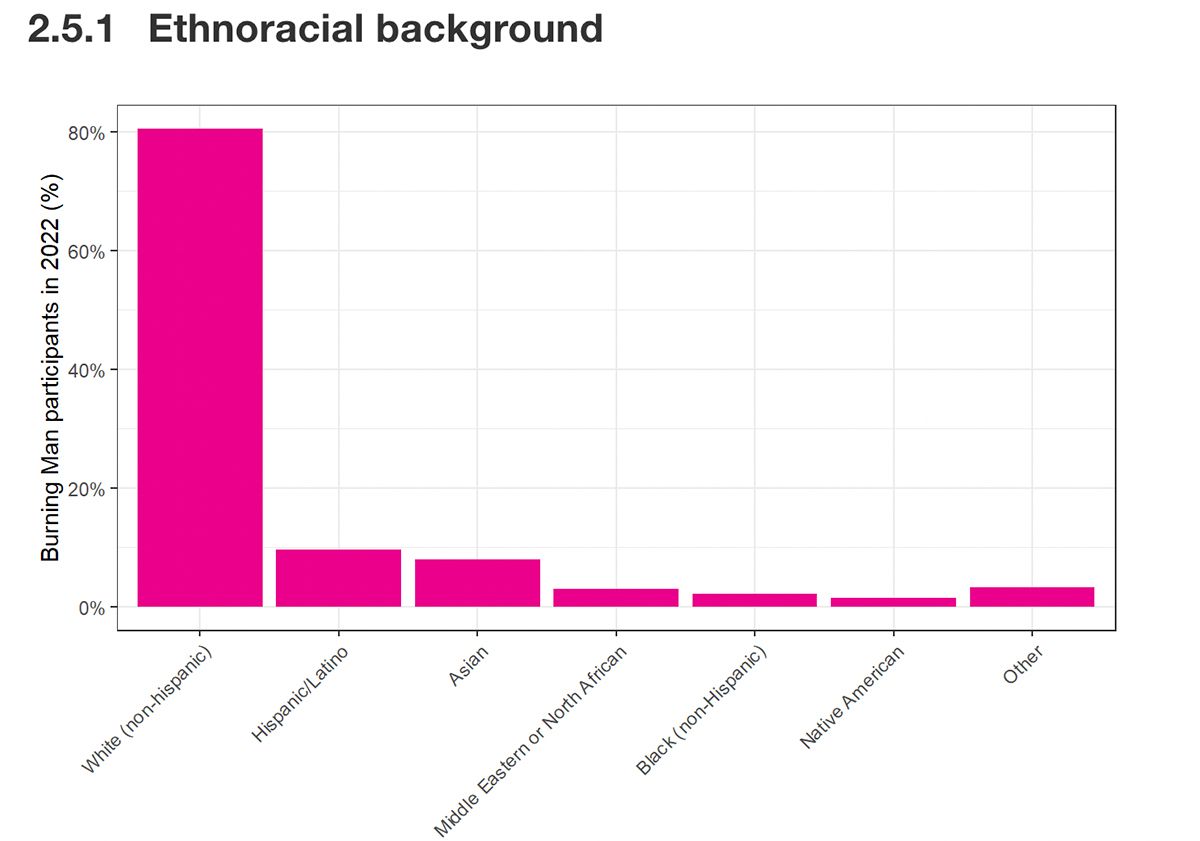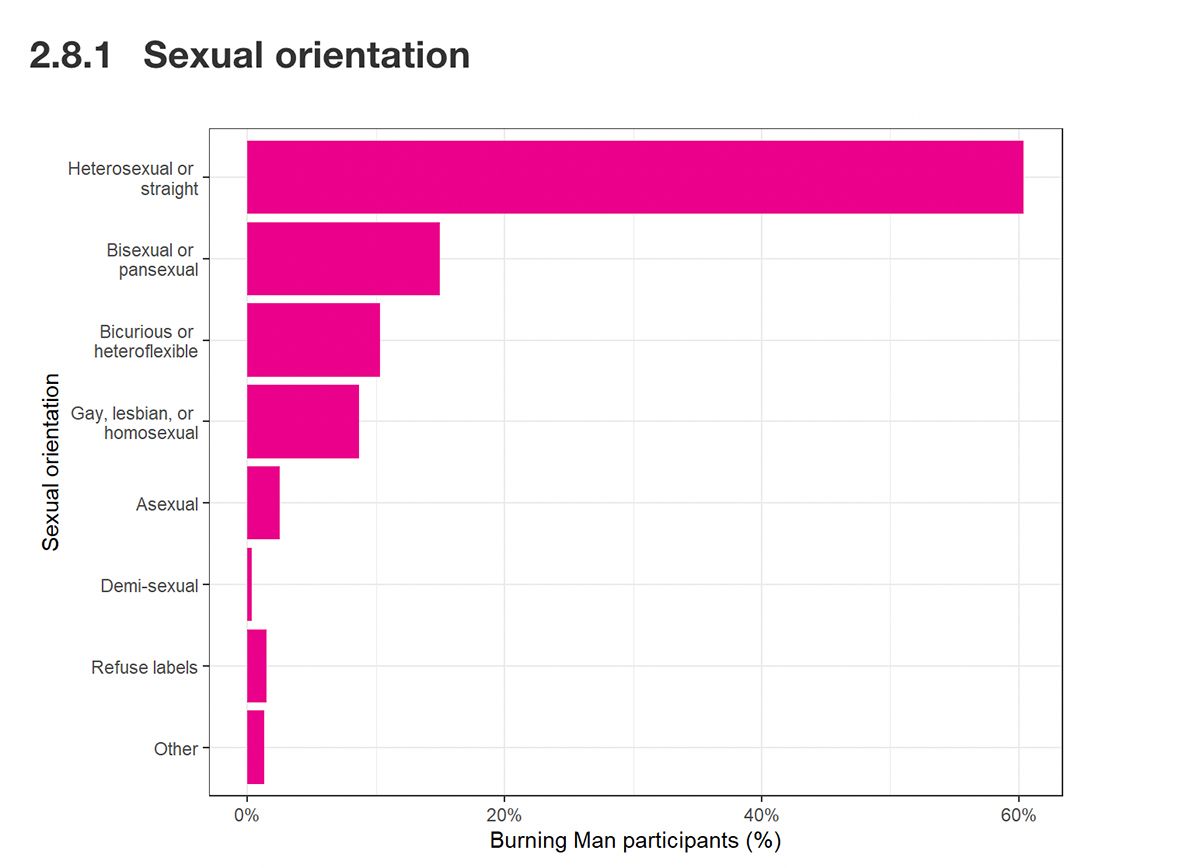The annual Black Rock City Census data is out for 2022, and it paints a picture of the desert festival getting marginally more diverse than it was a decade ago, and a fair bit less traditionally heterosexual.
Burning Man has long been criticized for being an event for a privileged and primarily white crowd, and the latest census data shows that is largely still the case. The sheer size of Burning Man has grown to over 70,000 attendees, up from 52,000 in 2010 — and up from around 25,000 a decade earlier. But the festival was slightly smaller in 2022 than it was in 2019 — around 75,000 people went last year, down from 79,000 pre-pandemic, and we had anecdotal evidence to suggest that this year's numbers will remain lower.
The census, which has been taken annually since 2002, isn't a precise accounting, but since 2013, organizers have used a similar methodology which involves both a random sampling on the playa and an online survey that's taken after the event. The result is an informed estimate of the demographics at each year's Burning Man, managed by Black Rock City Census General Manager Andi “Sonder” Morency.
"The true population values may differ from the presented estimates due to random variation in the sampling process," the census takers say.
The Chronicle notes today that the BRC Census shows the crowd getting somewhat wealthier and more educated over time, and that is certainly the case. In 2013, 7% of burners said they had a household income of over $300,000, and last year that rose to 16%. And these days 34% of attendees have graduate degrees, compared to 24% a decade ago.

The median age at the festival is going up, which is interesting — and perhaps lines up with the wealth factor, since older people tend to make more money. In 2013, the median age of burners was 32, and in 2022, it was 37.
And the BRC population is made up of more seasoned burners these days. In 2013, the census found the proportion of virgins on the playa was 38.6%, but last year it was down to 28.3% — and it was 26% in 2019, which had the highest attendance on record, at over 78,000.
In terms of racial diversity, the festival remains mostly white, with 83% of attendees identifying as white/non-Hispanic in 2013, and 80.5% saying the same in 2022.
The number of burners self-identifying as people of color has risen somewhat, up to 13.3% in 2022 from 7.3% in 2013. And slightly more Black people attend Burning Man now — 2.2% of the population, versus 0.9% in 2013.

Burning Man has become more diverse in other ways, though, specifically when it comes to gender and sexuality. Around 4% of attendees identified as something other than cisgender male or female in 2022, and 4.1% preferred they/them pronouns as well. This data can't be directly compared to 2013 because the questions were not asked in the same way then, however only 1.7% of attendees in 2013 said "other" when asked the male/female gender question.

And it seems there are many more queer, gay, bicurious, and bisexual people attending these days — or more who are willing to admit it.
68.5% of burners said they were straight in 2013, and that was down to 60.4% in 2022. The number of attendees identifying as gay or lesbian is up from 7.2% to 8.7%, and in the last decade the number of burners identifying as bisexual or pansexual has nearly doubled, from 8.3% to 15%. (The percent of attendees calling themselves bicurious or heteroflexible is about the same, around 10%.)

"The Black Rock City Census data report goes beyond mere statistics; it offers a glimpse into the heart and soul of Black Rock City," the census team said in a blog post. "It reveals a community that embodies the Principles of Radical Self-expression, Radical Inclusion, and Participation. From the diverse demographics to the profound emotional experiences, the report paints a vivid picture of this transformative event."
It'll be another year before we find out how things changed or stayed the same with the Black Rock City population in 2023.

